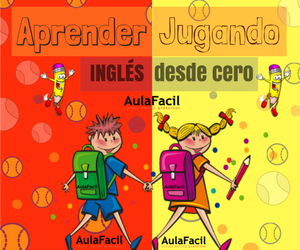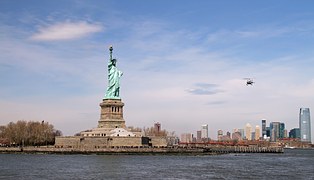In
“In” puede funcionar como preposición, adverbio, adjetivo e incluso como sustantivo. A continuación analizamos su uso como preposición.
1.- Preposición de lugar: En, dentro de
1.1.- Espacios con límites definidos:
Pueden ser espacios amplios:
Países: In Spain, in France…
Ciudades: In Paris, in Rome…
Lugares: in the park, in the garden...
Espacios acuáticos: In the river, in the ocean, in the Atlantic…
In the sky, in the world
...
Ejemplos:
The Danube river is in Europe
I live in Madrid
Our offices are in United Kingdom
The Solar System is in the Milky Way galaxy
I was fishing in the river
My children are playing in the garden
The night is so clear than you can see many stars in the sky
Everest is the highest mountain in the world
The Statue of Liberty is in New York
O lugares pequeños, específicos:
In the book, in the newspaper, in a letter…
In the fire
In the mirror
In the picture
In a line, in a row, in a queue…
In the eyes, in the ear…
In the saving account
...
Ejemplos:
It is quite impolite to stare directly in the eyes
Please, stop shouting in my ear
I keep all my money is my saving account
Smokers had to sit in the last rows of the bus
1.2.- Dentro de un espacio tridimensional:
In a room: in the kitchen, in the bedroom, in the bathroom…
In a building: in a prison, in a hospital, in a hotel, in the office, in the house…
In a box
In my pocket
In my wallet
In bed
In the hand
In here / In there
...
Ejemplos
I put your wallet in the drawer
She had the sunglasses in her hand
My mom chats with my sister in the kitchen
You shouldn’t talk with food in your mouth
When we went to Paris we stayed in a lovely hotel
It’s very noisy in here
Nick left the documents in the office
The strawberrys are packed in plastic boxes
1.3.- Vehículos:
In a car
In a taxi
In a helicopter
In a boat
In a lift
...
Observación:
1.- Medio de transporte
Cuando hablamos del tipo de medio de transporte empleado utilizamos la preposición “by”
I went by train / by car / by plane / by foot… (Fui en tren / en coche / en avión / andando…)
Cuando hablamos de un vehículo concreto entonces se utiliza la preposición “in / on” (dependiendo del tipo de transporte).
IN: cuando vamos sentado
I went in a car / in a taxi / in a truck / in a helicopter…
ON: cuando nos podemos levantar y movernos
I went on a ship / on a plane / on a train / on a bus…
Atención: I was in a ship (no hago referencia al medio de transporte utilizado sino al lugar donde me encontraba)
ON: Cuando vamos sentado o de pie en la parte de arriba del vehículo
I went on a bicycle / on a motorcycle / on a surfboard / on skis / on a skateboard / on foot…
Veamos algunos ejemplos:
I went to London by plane; I flew on a very old plane
We went to the theatre by car, in my brother’s car
Edward went to America by sea; he went on a luxury cruise
2.- “In” vs “Into”
La preposición “In” indica posición en un lugar mientras que la preposición “Into” indica movimiento hacia el interior de un lugar.
The dog jumped into the water (el perro estaba fuera del agua y saltó al agua)
En cambio si los niños ya están dentro del agua y están saltando diríamos:
The children jump in the water
2.- Preposición de tiempo:
2.1.- En, durante: indica el momento en el que ocurre una acción
Se utiliza con:
Meses, años, décadas, siglos:
in July, in September, in 2015, in the sixties, in the 20th century
Momentos del día:
in the morning, in the afternoon, in the evening, in the middle of the day… (BUT: at night, at noon, at midday, at midnight)
Estaciones del año:
In winter, in summer, in autumn…
Otras expresiones de tiempo:
In the present, in the past, in the future, in the holidays, in years…
In a minute, in the meantime, in two days, in those days, in a second, in time (con antelación), in the near future, in the past...
Ejemplos
I finished my studies in 2006
I like to run in the morning
My family used to go to the beach in summer
My next course starts in September
My birthday is in October
America was discovered in 1492
I hasn´t be in Madrid in years
What did you do in the afternoon?
This is my second accident in 2 years
Americans want to send a mission to Mars in the near future
Life will change a lot in the next century
In the coming months I will be very busy with my studies
The film was set in the Middle Ages
We’ll move to Madrid in November
People enjoying the beach in the evening
2.2.- Dentro de: indica el tiempo que falta para que ocurra una acción
I will finish my report in three days
I`ll be with my brother in an hour
My son will come back in a week
The film will finish in 20 minutes
We’ll flight to Rome in two weeks (dentro de dos semanas)
I’ll help you in a second
My daughter will be ready in a few minutes
I will finish this report in a 10 minutes
2.3.- En (duración temporal): indica el tiempo que requiere la realización de una acción
They built this bridge in three years (tardaron 3 años en construirlo)
He has learnt Chinese in 5 years
3.- Otros significados
3.1.- En (al hablar de forma, color, tamaño, materia)
The students gathered in a circle around the teacher
My mother painted my bedroom in green
You should by this trouser in large
This sculpture is made in marble
You can buy this coat in three differents
3.2.- En (indica manera, modo):
I paid the hotel in pounds
In that shop you have to pay in cash
His wife left the hospital in tears
I couldn’t hear him. He spoke in very low voice
The instructions for use of this phone are in Japanese
The tourists have been organised in groups for the transfer to the hotel
The swans swim in groups
3.3.- En (ropa)
I went to the party in suit
In that school students were dressed in uniform
3.4.- En (tiempo climático)
In the rain, in the sun, in the wind, in the fog…
Ejemplos:
The mother didn’t allow her son to play outside in the rain
It’s very dangerous to drive in the fog
3.5.- En (ratios, números)
About one in ten workers lost his job in the last crisis
Tourists come to Barcelona in their thousands
That film is very lengthy and has been divided in two parts
3.6.- En (entre)
That illness is common in undernourished children
This article is focused on unemployment in adults
The Government tries to promote the use on English in students
3.7.- En (haciendo referencia a una persona)
It’s not in my son to insult anyone
Even if he seems so rude, there is a nice person in him
People has lost faith in politicians
3.8.- Dedicarse a una profesión
I work in the financial sector
This new law only applies to workers in the transport sector
3.9.- De (tras un adjetivo superlativo)
Peter is the most brilliant person in his family
A new skyscraper in Dubai is the highest building in the world
3.10.- En (creencias, pensamientos, intereses, opiniones, sentimientos)
I am not interested in football
I believe in God
In my opinion Federer has been the greatest tennis player in history
4.- Diferencias
1.- Preposiciones de lugar: At / In / On
Estas tres preposiciones se utilizan para indicar una posición.
Como regla general se podría decir:
In: se utiliza para lugares más amplios o para espacios interiores
On: se utiliza para lugares menores o para superficies
At: se utiliza para los lugares más pequeños, más específicos, para mostrar una posición exacta
Ejemplo:
My sister lives on the 3th floor at 21 Mansel Road in Bristol
Existen unas normas generales que explican en qué caso hay que utiliza cada una de ellas. Pero también en inglés muchas veces se emplea una u otra preposición en función de su uso histórico (costumbre), sin responder a una regla determinada, por lo que habrá que aprender estas expresiones individuales.
At
Se utiliza para los lugares más pequeños, más específicos, para mostrar una posición exacta. No indica si se está dentro o fuera, arriba o abajo…, sino que pone el énfasis en el lugar
I am at the airport
Estoy en el aeropuerto (puedo estar dentro o fuera). Lo que señalo es dónde me encuentro; no estoy en el centro de la ciudad sino en el aeropuerto.
Veamos algunas diferencias entre “At” / “In”:
At school / In school
He is at school: Implica que él está en este momento en el colegio
He is in school: Implica que él actualmente estudia en el colegio (aunque puede que en este momento no se encuentre allí)
In prison / at prison
He is in prison: significa que él está encarcelado
He is at prison: significa que él está en la prisión (trabaja allí, está de visita…)
In the hospital / at the hospital
He is at the hospital: Él está en el hospital (puede que dentro o que fuera); puede estar de visita, esperando al doctor… Pongo el énfasis en el lugar
He is in the hospital: Él está en el hospital (dentro). Implica que está recibiendo atención médica. Pongo el énfasis en la actividad.
In the elevator / at the elevator
I’m in the elevator: Yo estoy dentro del ascensor
I’m at the elevator: Yo estoy junto al ascensor
At the hotel / In the hotel
I am at the hotel: estoy en el hotel (puede que dentro o fuera). Pongo el énfasis en la localización
I am in the hotel: Estoy en el hotel (dentro)
On:
1.- Indica que algo se encuentra sobre una superficie:
On the wall
On the ceiling
On the cover
On the floor
On the carpet
On the table
On the chair
On the trouser
...
Ejemplos:
I like that picture on the cover of the book
En cambio: That picture is in the book (dentro del libro)
My flat is on the second floor
He has a little scar on his face
The mirror hangs on the wall
The book is on the table
I live on the planet Earth
There is a stain on my trouser
...
2.- Indica proximidad, a lo largo de (se utiliza con lugares con forma lineal):
On streets
On Avenue
On the beach
...
Ejemplos:
Valencia is on the Mediterranean coast
The cathedral is on this street
3.- Con medios de transporte:
Con vehículos públicos: On a bus, On a train, On a plane, On a ship…
Con vehículos pequeños: On a bicycle, On a motorbike..
On a horse
On an elephant
...
4.- Otras expresiones:
On the left
On the right
On the way (en el camino)
Ejemplos:
The cathedral is on the left
2.- Preposiciones de tiempo: At / In / On
At
Con horas del día:
At 5 o´clock
At quarter to four
At 3:25 p.m.
Con ciertos momentos del día:
At noon
At sunrise (al amanecer)
At sunset (al atardecer)
At night
At midday
At midnight
Con horas de comidas:
At dinner
At breakfast
At lunch
Con fiestas, vacaciones:
At Christmas
At Easter
At New Year
At the weekend
Con expresiones temporales:
At first
At last
At the moment
At the same time
At present
At the age of (a veces se simplifica: At the age of 67 = At 67)
At the end of the week
...
On
Con días de la semana:
On Monday, On Saturday...
Con fechas:
On the 28th of October
Con fiestas:
On your birthday
On Easter Sunday
Atención
Cuando indicamos una parte del día pero añadimos a qué día se refiere utilizamos la preposición “On”:
In the morning / on Monday morning
In the afternoon / On Saturday afternoon





